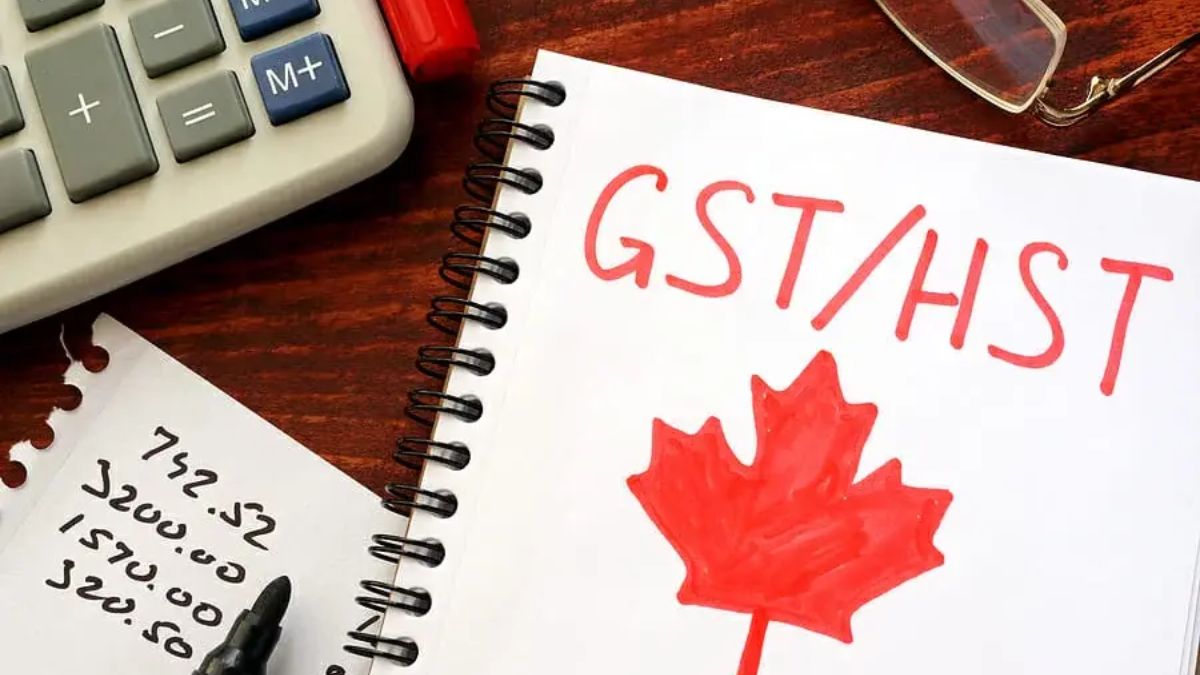The Canada Revenue Agency (CRA) has officially confirmed that the next GST/HST Rebate payment will be issued on Friday, October 3, 2025. This quarterly payment provides essential financial relief to millions of Canadians, helping them manage the burden of federal and provincial sales taxes.
For countless families, seniors, and students, the GST/HST credit is more than a small boost — it’s a crucial support that helps them buy groceries, pay bills, and stay afloat amid ongoing cost-of-living challenges.
What Is the Canada GST/HST Credit?
The Goods and Services Tax/Harmonized Sales Tax (GST/HST) credit is a tax-free quarterly benefit designed to help low- and modest-income Canadians offset the cost of sales taxes.
Unlike income-based programs such as the Canada Child Benefit (CCB) or Old Age Security (OAS), this credit focuses on consumption-based taxes, refunding part of what Canadians spend on everyday goods and services.
Why It Exists
The GST/HST credit ensures that Canada’s sales tax system remains fair, particularly for lower-income households who feel a greater impact from consumption taxes. Introduced in 1991 alongside the federal GST, the rebate was meant to make the new system more equitable.
Canada’s GST and HST Explained
Canada’s Goods and Services Tax (GST) is a 5% federal tax applied to most goods and services across the country. Some provinces have merged their provincial sales tax (PST) with the GST to create the Harmonized Sales Tax (HST), which ranges from 13% to 15% depending on the province.
The GST/HST Rebate helps return a portion of these taxes to low-income earners, ensuring the system does not disproportionately impact them.
Canada’s GST/HST Rebate October 2025: Key Details
| Category | Details (Confirmed) |
|---|---|
| Payment Date | Friday, October 3, 2025 |
| Quarterly Schedule (2025) | Jan 3, Apr 4, Jul 4, Oct 3 |
| Maximum Annual Amounts (July 2025–June 2026) | $533 (single), $698 (couple), $184 (per child under 19) |
| Eligibility | Based on 2024 tax return and family net income |
| Payment Method | Direct deposit or cheque |
| Official Source | CRA – GST/HST Credit Portal |
These quarterly payments provide steady relief throughout the year and play a critical role in the Canadian social support network.
How Much You’ll Receive in October 2025
The amount you receive depends on your family income and household size. The CRA automatically calculates eligibility when you file your 2024 tax return.
Maximum Annual Amounts (2025–2026):
- $533 – Single adult
- $698 – Married or common-law couple (combined)
- $184 – Per child under 19
Examples:
- A single mother with two children could receive up to $901 annually, or $225.25 quarterly.
- A retired couple with modest income may get $698 annually, or $174.50 per quarter.
These payments may not eliminate financial strain entirely, but for millions of Canadians, they provide critical help with daily expenses.
Income Phase-Out Rules
Not everyone qualifies for the full credit. The GST/HST rebate gradually decreases as your family income increases.
- Single adults earning over $55,000 typically see their credit reduced to zero.
- Couples with children may remain eligible up to $65,000–$70,000, depending on household size.
The CRA automatically adjusts your rebate using income data from your latest tax return, ensuring payments align with your financial situation.
Provincial Differences: GST vs. HST
While the rebate applies nationwide, its value differs based on your province’s tax system.
HST Provinces (13–15% total tax):
Ontario, Nova Scotia, New Brunswick, Newfoundland & Labrador, Prince Edward Island
Residents here face higher sales taxes, so the rebate offers stronger financial relief.
GST + PST Provinces:
British Columbia, Saskatchewan, Manitoba, Quebec
These provinces levy separate provincial taxes, so the rebate only offsets the federal GST portion.
GST-only Provinces/Territories (5%):
Alberta, Yukon, Northwest Territories, Nunavut
These regions pay the lowest sales tax overall, but the rebate still provides meaningful assistance.
Historical Context of the GST/HST Credit
The GST was first introduced in 1991, replacing the Manufacturer’s Sales Tax (MST), a hidden levy embedded in product prices. While initially controversial, the shift improved transparency in tax collection.
To offset the new tax’s impact on lower-income Canadians, the GST Credit was created. Over time:
- 2000s: Payments began being indexed to inflation.
- 2010s: Several provinces adopted HST to simplify taxation.
- 2023: The government temporarily introduced a Grocery Rebate, doubling the credit to help households cope with food inflation.
Though the special rebate has ended, the quarterly GST/HST payments remain a consistent and reliable form of relief.
Filing Taxes: The Key to Receiving the Rebate
To receive the October 2025 rebate, Canadians must have filed their 2024 tax return. Even if you earned no income, filing ensures the CRA can determine your eligibility.
Commonly Missed Groups:
- Students: Many don’t realize that filing taxes — even with minimal income — makes them eligible for the credit.
- Seniors: Retirees on OAS/GIS benefits must still file annually to receive payments.
- Newcomers: Must submit Form RC66 to apply for benefits after establishing residency.
Failing to file a tax return means losing out on hundreds of dollars in annual benefits.
How the Rebate Works with Other Benefits
The GST/HST credit is part of a broader network of federal supports that aim to ease living costs for Canadians.
Key complementary programs include:
- Canada Child Benefit (CCB) – Monthly, tax-free support for families with children.
- Climate Action Incentive Payment (CAIP) – Quarterly payments offsetting carbon pricing.
- Old Age Security (OAS) & Guaranteed Income Supplement (GIS) – Monthly income supports for seniors.
Together, these programs form a layered safety net, helping Canadians at different life stages manage inflation and living costs.
How Canadians Use the GST/HST Rebate
While the quarterly amount may appear modest, surveys show Canadians use these payments for essential expenses:
- Buying groceries like bread, milk, eggs, and fresh produce.
- Paying monthly utility or internet bills.
- Covering transportation costs such as fuel or bus passes.
- Helping parents afford school supplies and extracurricular activities.
- Supporting students with textbooks and rent.
For many, the GST/HST rebate isn’t luxury money — it’s survival support that keeps households afloat between paychecks.
Payment Method and Schedule
The CRA issues the GST/HST rebate four times each year.
Quarterly Dates for 2025:
- January 3, 2025
- April 4, 2025
- July 4, 2025
- October 3, 2025
Direct Deposit:
Funds appear in your bank account the same day.
Paper Cheque:
Allow 5–10 business days for delivery, depending on your postal code.
To avoid delays, enroll in direct deposit via CRA My Account or through your financial institution.
Protecting Yourself from Scams
The CRA warns Canadians to remain vigilant against fraudulent messages related to the GST/HST credit.
Red Flags:
- Emails or texts claiming: “Click here to claim your GST rebate.”
- Calls demanding repayment or threatening legal action.
- Requests for payment via gift cards, Bitcoin, or e-Transfer.
The CRA never communicates payment details by email or text message. Always verify your account information directly on the official CRA website.
Economic Importance of the GST/HST Rebate
According to Statistics Canada, more than 11 million Canadians received the GST/HST credit in 2024. Economists say these payments play a crucial role in maintaining financial stability and stimulating consumer spending.
Why It Matters:
- Progressive support: Helps those most affected by inflation.
- Immediate relief: Funds are typically spent right away on essentials.
- Economic boost: Stimulates local economies through increased spending.
With grocery and housing costs up significantly since 2020, the rebate continues to serve as a vital financial cushion for low-income households.
Step-by-Step Guide: Ensuring You Get Your October 2025 Rebate
- File your 2024 tax return by April 30, 2025.
- Enroll in direct deposit via CRA My Account or your bank.
- Report life changes such as marriage, separation, or having a child.
- Keep your information updated to prevent delays or missed payments.
- Check your CRA My Account regularly for status updates.
By staying proactive, Canadians can ensure they receive their payments smoothly and on time.
5 Frequently Asked Questions (FAQs)
Q1. When will the next Canada GST/HST Rebate be paid?
The next quarterly GST/HST rebate will be issued on Friday, October 3, 2025, either through direct deposit or cheque.
Q2. How much can I receive from the rebate?
The maximum annual amounts for 2025–26 are $533 for singles, $698 for couples, and $184 per child under 19.
Q3. Do I need to apply for the GST/HST credit?
No, the CRA automatically determines eligibility when you file your tax return. However, newcomers must submit Form RC66.
Q4. What income level disqualifies me from receiving the credit?
The credit starts to phase out for single adults earning above $55,000 and families above $65,000–$70,000.
Q5. How can I check my payment status?
Log into your CRA My Account online to view payment history, next payment date, and eligibility status.













